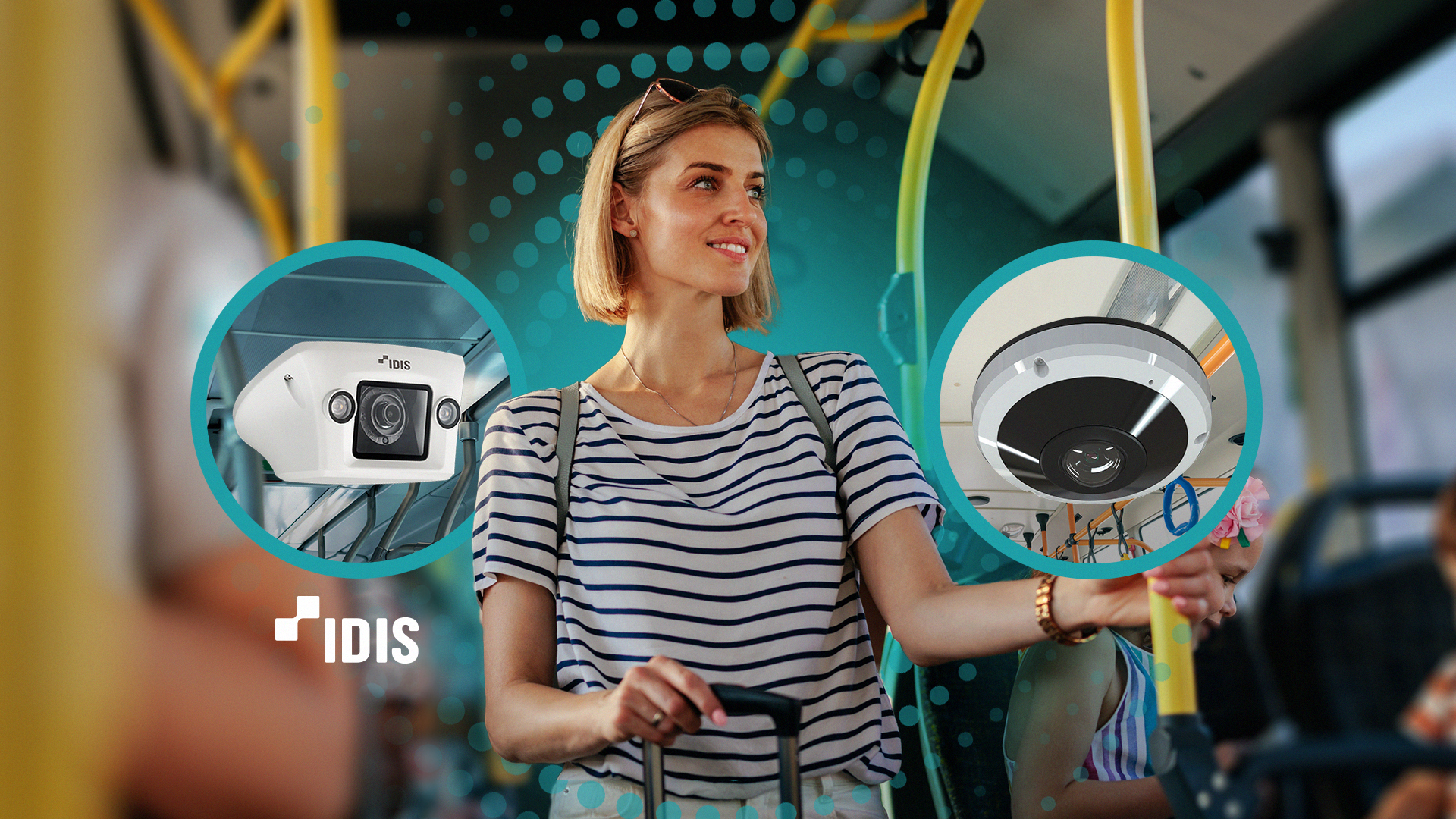
By Brendan Boyle, Director of Sales – Mobile, IDIS Americas
The latest advances in video surveillance technology are reshaping the way U.S. transit and bus service operators manage their fleets. Modern camera systems now offer a comprehensive, 24/7 view of events in and around vehicles and facilities, while automated tools and AI analytics ease the challenge of monitoring and responding to incidents. Today’s bus fleet managers are leveraging these innovations to unlock new levels of service efficiency, profitability, and competitiveness.
Modernizing Transit Services
For managers and operators looking to modernize urban, interurban, and rural mass transit services, emerging technologies promise seamless integration of video surveillance with broader fleet management systems. This integration not only enhances safety but also supercharges operations by providing automated AI video analytics. More capable camera systems are no longer used solely to address safety concerns—such as attacks from passengers, robbery, or verbal abuse—but also to drive competitive advantage through the strategic use of automated video data.
In many cases, these advanced video solutions are replicating successful deployments from other public-facing sectors like retail and hospitality. Integrated systems equipped with AI analytics deliver deep insights into customer behavior and operational trends, enabling transit managers to make better, data-driven decisions.
Beyond Traditional Safety Measures
Historically, video systems in mass transit have focused on protecting drivers, passengers, and vehicles, ensuring regulatory compliance, and mitigating litigation risks. While these risk-reduction functions remain critical, there is a growing recognition that video surveillance can also bolster operational efficiency and profitability in innovative ways. When managers can see a live, detailed picture of what’s happening on each route, they’re empowered to:
- Identify areas for targeted service improvement and training.
- Allocate staff and resources more effectively to meet demand.
- Plan routes and detours based on real-time road conditions.
- Analyze passenger behavior, wait times, and vehicle occupancy over time.
- Embrace a new era of AI video analytics
While many business trends are difficult to predict, one certainty is that integrated video data is set to play an increasingly important role in strategic and operational decision-making. As AI analytics continue to evolve, transit operators and fleet managers will lean more on real-time insights and predictive capabilities to craft smarter, more proactive strategies. This rapid advancement in AI-powered video analytics is transforming raw footage into dynamic, actionable intelligence that anticipates future challenges, enhancing fleet management and safety across the board.
The New Priorities for Fleet Operators
Modern transit leaders, including directors of operations, chief security officers, maintenance managers, and operations managers—are demanding integrated surveillance solutions that offer:
- Precise Tracking: The ability to pinpoint bus locations, speeds, and directions in real time.
- Comprehensive Visibility: High-definition views of passengers, drivers, and on-board activities regardless of lighting conditions, without blind spots.
- 360-Degree Monitoring: Continuous visual coverage of every vehicle’s exterior—front, back, and sides.
- Reliable Data Transmission: Consistent and secure transmission of video data, telemetry, and other metrics to support proactive incident intervention and efficient post-event review.
Above all, these operators need solutions with a sustainable total cost of ownership (TCO). Factors such as equipment lifespan, ease of installation, maintenance frequency, data transmission and storage costs, and operator efficiency are all critical. A system that is too expensive to run to its full capabilities not only wastes investment but also fails to deliver the competitive edge that is needed.
Purpose-Designed Solutions for U.S. Transit
Today’s best transit video technologies have been honed over many years, incorporating ruggedized network video recorders, state-of-the-art cameras, and efficient operating systems that have proven themselves in demanding real-world conditions. Purpose-designed transit video technology typically encompasses:
- High-performance cameras,
- Robust, U.S. military-grade 4K recorders
- Essential accessories
- A feature-rich Video Management System (VMS)
This technology enables live monitoring and recording of both vehicle interiors and exteriors, combining robust video capture with GPS tracking and vehicle information systems data—such as location and speed—to improve safety and deliver valuable insights for optimizing service levels and fleet management.
Taking Advantage of AI
Looking ahead, operators will increasingly adopt automated detection and alert systems that enable more efficient, real-time monitoring. They are set to embrace AI-powered analytics tools—already successful in sectors from retail to casinos—that support functions like people counting, line monitoring, occupancy tracking, and even fall or violence detection. These capabilities not only improve safety but also contribute directly to profitability.
Importantly, whether a fleet operator opts for full-scale adoption or prefers to test the waters with select functions, the best solutions will offer a seamless transition. Forward-compatible systems allow for the gradual adoption of new technologies and functionalities as industry standards evolve—ensuring that operators are never forced into expensive, wasteful rip-and-replace upgrades.
A Competitive Edge for U.S. Transit Operators
The integration of advanced video technology and AI analytics is not merely an upgrade, it’s a strategic investment in the future of mass transit. By transforming raw video data into actionable intelligence, transit operators can make proactive decisions that optimize operations, enhance safety, and maintain a competitive edge in today’s fast-paced industry.
With this evolving landscape, U.S. transit and bus service operators have a unique opportunity to not only meet safety standards but to redefine service excellence, operational efficiency, and overall profitability. The future of transit is here, and it’s smarter, safer, and more connected than ever before.
Gain further insights about mass transit video surveillance here.